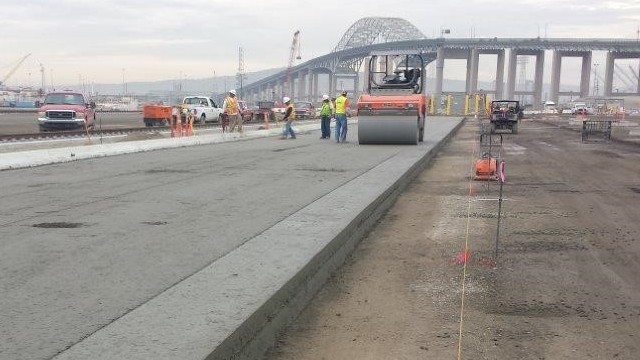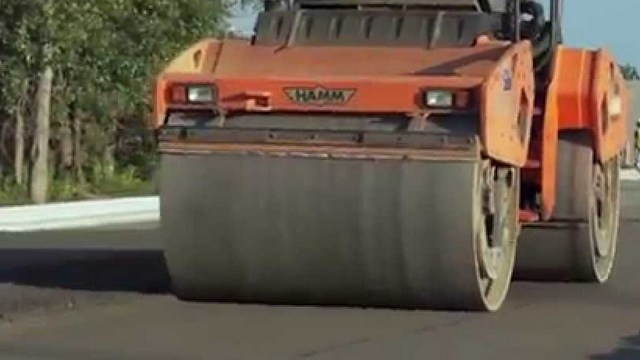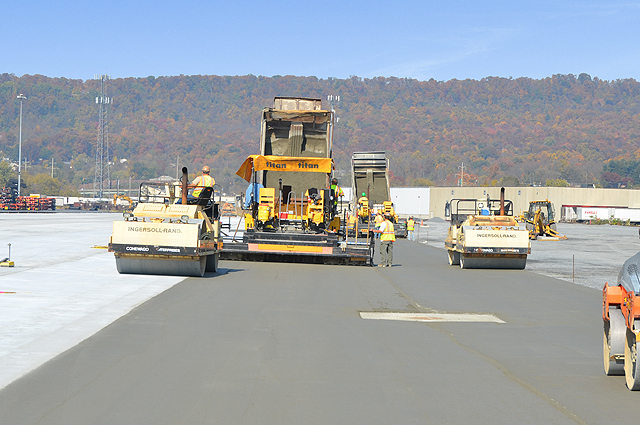Introduction
Roller-compacted concrete, or RCC, takes its name from the construction method used to build it. It’s placed with conventional or high-density asphalt paving equipment,then compacted with rollers.

Ingredients
Roller-compacted concrete has the same basic ingredient as conventional concrete: cement, water, and aggregates, such as gravel or crushed stone.
But unlike conventional concrete, it’s a drier mix—stiff enough to be compacted by vibratory rollers.
Jointless
Typically, RCC is constructed without joints. It needs neither forms nor finishing, nor does it contain dowels or steel reinforcing.
Roller Compacted Concrete is economical, tough and fast, which made use of it from specialized applications to mainstream pavement. Nowadays Roller Compacted Concrete used for any type of industrial or heavy-duty pavement. This is simply due to the strength and performance of conventional concrete with the economy and simplicity of asphalt. Together with long service life and minimal maintenance, Roller Compacted Concrete’s low initial cost adds up to economy and value.

Current Uses
Today, RCC is used when strength, durability, and economy are primary needs:
- Port,
- Intermodal, and military facilities;
- Parking,
- Storage, and staging areas;
- Streets, intersections, and low-speed roads.
Advantages of Roller Compacted Concrete Pavements
- No Rutting.
- No Pot Holes.
- Span soft localized subgrades.
- Will not deform under heavy, concentrated loads
- Do not deteriorate from spills of fuels and hydraulic fluids
- Will not soften under high temperatures
Concrete Mix and Construction Method
RCC is ecomonomical due to its high-volume, high-speed construction methods.
- Large-capacity mixers set the pace.
- Normally, RCC is blended in continuous-mixing pugmills at or near the construction site.
- These high-output pugmills have the mixing efficiency needed to evenly disperse the relatively small amount of water used.
- Dump trucks transport the RCC and discharge it into an asphalt paver, which places the material in layers up to 10-inches thick and 42-feet wide.
- Compaction is the most important stage of construction: it provides density, strength, smoothness, and surface texture.
- Compaction begins immediately after placement and continues until the pavement meets density requirements.
- Curing ensures a strong and durable pavement.
- As with any type of concrete, curing makes moisture available for hydration—the chemical reaction that causes concrete to harden and gain strength.
- A water cure sprays or irrigates the pavement to keep it moist.
- A spray-on membrane can also be used to seal moisture inside.
- When appearance is important, joints can be saw cut into the RCC to control crack location.
- If economy outweighs appearance, the RCC is allowed to crack naturally.
- Once cured, the pavement is ready for use.
- An asphalt surface is sometimes applied for greater smoothness or as a riding surface for high-speed traffic.

Low cost continues to draw engineers, owners, and construction managers to RCC. But today’s RCC owes much of its appeal to performance: The strength to withstand heavy and specialized loads; the durability to resist freeze-thaw damage; and the versatility to take on a wide variety of paving applications. From container ports to parking lots, RCC is the right choice for tough duty.
